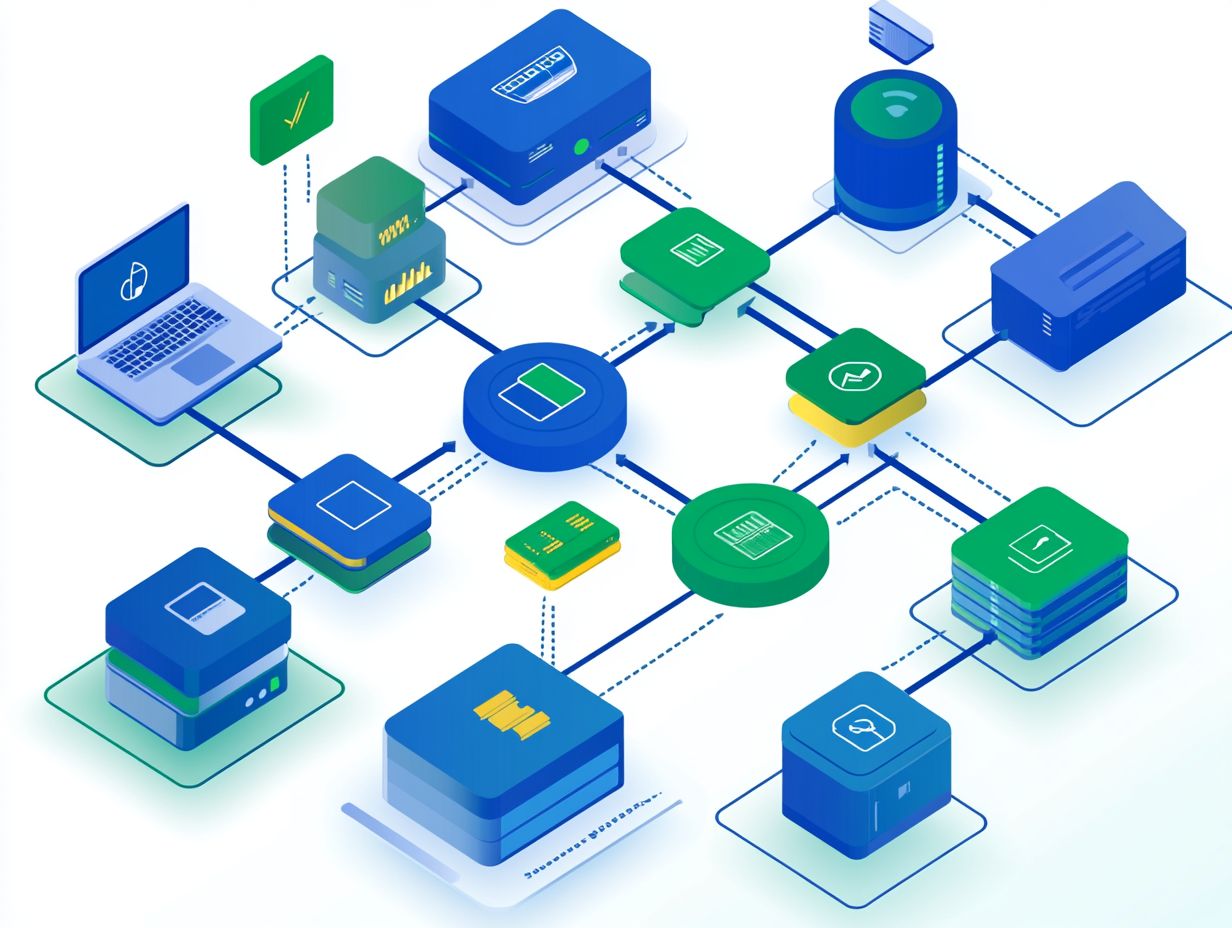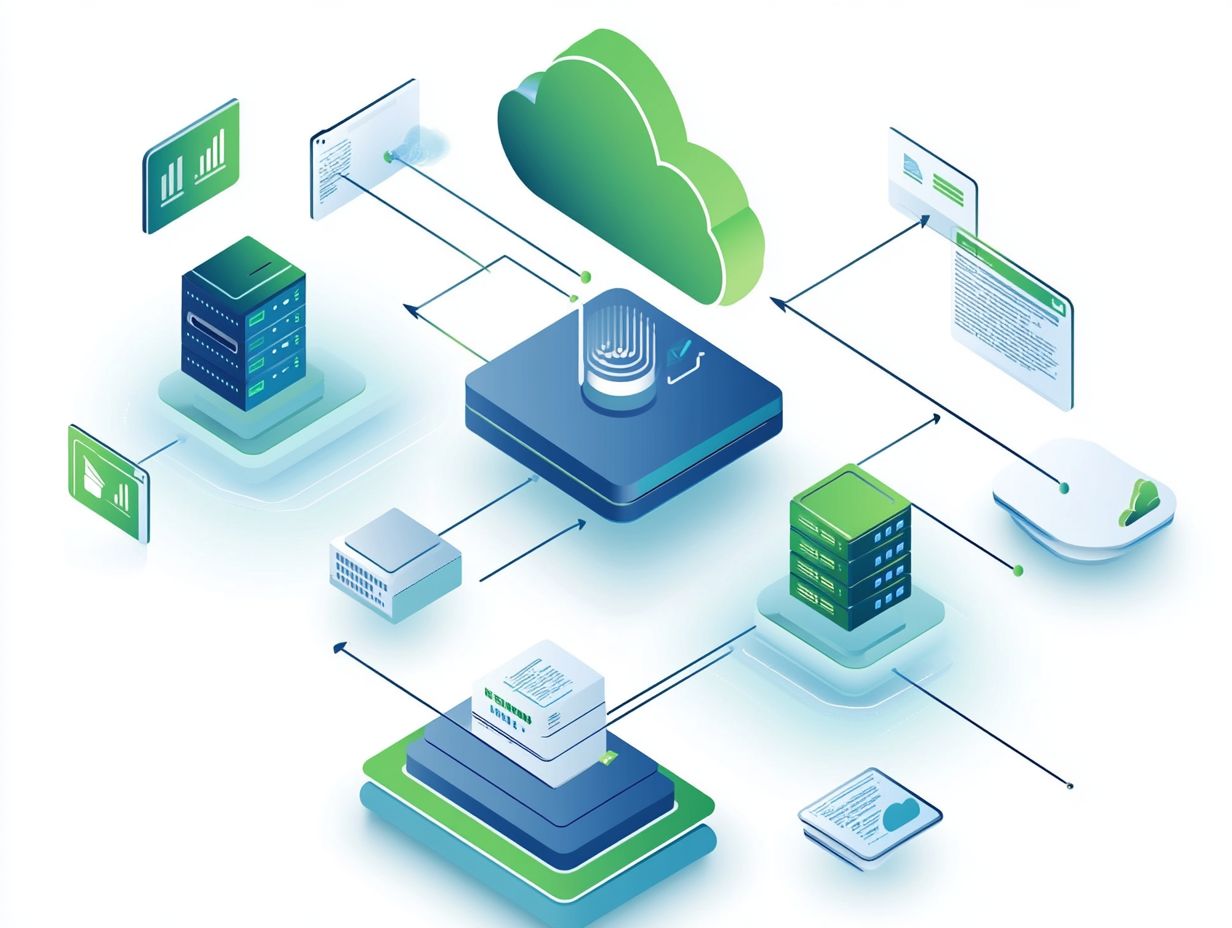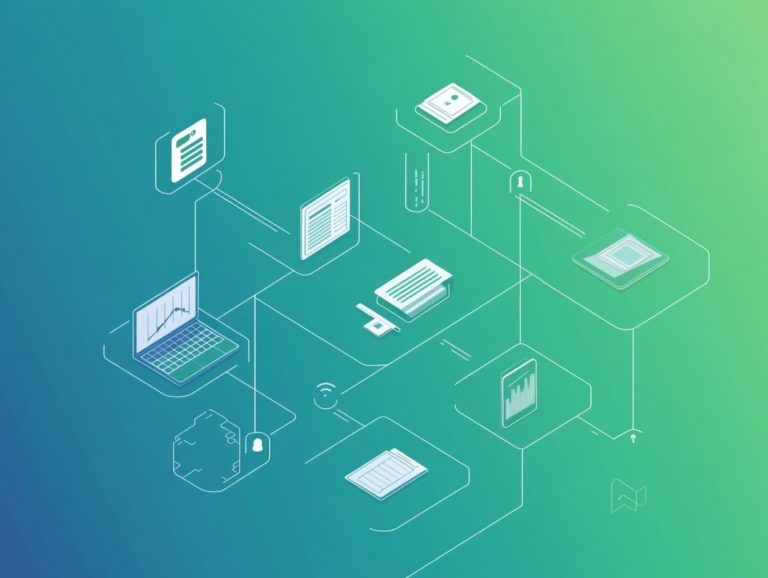How to Migrate to a PaaS Environment
In today s fast-paced tech landscape, understanding Platform as a Service (PaaS) is crucial for businesses. It helps streamline operations and boost flexibility.
This article will guide you through migrating to a PaaS platform. We ll outline its benefits and assess your current infrastructure to help you choose the ideal provider.
You ll navigate the migration process and discover best practices to optimize performance. We ll also explore potential challenges you might face along the way.
Prepare to transform your operations and harness the power of PaaS!
Contents
- Key Takeaways:
- Understanding PaaS Environments
- Preparing for Migration
- Identifying Goals and Objectives
- Choosing a PaaS Provider
- Migration Process
- Optimizing Performance in PaaS
- Potential Challenges and Solutions
- Frequently Asked Questions
- What is PaaS, and why should I switch to it?
- How do I choose the right PaaS provider for my business?
- Do I need to make any changes to my current applications before migrating to a PaaS environment?
- How do I ensure a smooth and successful migration to a PaaS environment?
- Can I migrate all types of applications to a PaaS environment?
- What are the Key Security Considerations for Cloud Service Platforms?
Key Takeaways:

Understand the benefits of a PaaS environment, such as increased scalability and reduced maintenance costs. Before migrating, assess your current infrastructure and identify clear goals.
Consider factors such as pricing, support, and security when choosing a PaaS provider.
Understanding PaaS Environments
Understanding PaaS is key for organizations aiming to adopt cloud migration methods. It simplifies the development, deployment, and management of cloud-native applications, making the business case for adopting PaaS even stronger.
PaaS offers a platform that hides the complexities of infrastructure. This lets you focus on crafting scalable applications without the hassle of server management.
Definition and Benefits
PaaS, or Platform as a Service, is a cloud model that allows you to build and manage applications without dealing with underlying infrastructure.
This model simplifies development, freeing you to focus on coding. You won t have to wrestle with infrastructure concerns.
PaaS can significantly cut costs. You only pay for what you use, reducing the need for extensive IT resources.
It also enhances collaboration and automation in DevOps a practice that combines software development and IT operations. This makes continuous integration and deployment easier.
Providers like Heroku, Google App Engine, and Microsoft Azure lead the way. They deliver tools that work seamlessly with modern DevOps practices, speeding up your time-to-market and giving you an edge.
Preparing for Migration
Effective cloud migration starts with a solid strategy. Assess your current infrastructure, identify workloads, and see if a hybrid cloud solution fits your needs.
This approach ensures you maximize efficiency tailored to your specific circumstances.
Assessing Current Infrastructure
Evaluating your infrastructure is vital in the migration process. This helps determine which workloads can move smoothly to the cloud and highlights potential challenges.
Examine existing applications, focusing on performance metrics and compliance. Categorizing workloads by cloud readiness helps identify services primed for migration.
Address issues like data security, network latency, and integration complexities. Understanding these factors streamlines your transition and optimizes resource allocation throughout the migration journey.
Start your migration journey today and unleash the full potential of your business in the cloud!
Identifying Goals and Objectives

Identify clear goals and objectives. This is essential for crafting a successful migration strategy, as it directs your planning process and ensures alignment with your organizational needs and cloud data center capabilities.
Set specific, measurable targets. This will help you tackle challenges like data storage, application performance, and security.
Emphasizing these goals allows decision-makers to evaluate cloud solutions that best suit their needs.
With a solid understanding of cloud data centers and their resources, you can make informed choices that streamline the migration process and enhance operational efficiency.
Aligning your objectives with technical capabilities creates a pathway for improved cost management, ensuring effective resource utilization throughout the transition.
Choosing a PaaS Provider
Selecting the right PaaS provider is crucial in your cloud migration journey. This choice impacts the performance of your cloud-native applications and can greatly influence your broader strategy for leveraging public cloud and multi-cloud services. For guidance, you might want to explore how to transition to a cloud environment.
Factors to Consider
When selecting a PaaS provider, consider critical factors such as features, pricing structures, compliance with industry standards, and security levels.
Assess scalability options, as this can significantly influence your future growth and adaptability.
Understanding each platform’s unique offerings, such as integrated development tools and third-party service integration, will guide you to a solution that meets your project needs.
Examine security compliance to ensure the provider adheres to regulations like GDPR or HIPAA, which are essential for safeguarding sensitive data.
Ultimately, a meticulous evaluation will empower you to select a PaaS provider that aligns seamlessly with your current requirements and long-term objectives.
Migration Process
The migration process requires a careful approach to transition workloads from on-premises systems to the cloud, particularly when it comes to overcoming common PaaS adoption hurdles.
You might choose to simply move your applications as they are, make slight adjustments, or completely rebuild them, depending on your organization’s unique needs.
Each choice offers distinct advantages, allowing you to optimize your cloud experience while ensuring a smooth transition.
Step-by-Step Guide
A well-crafted step-by-step guide to migration can significantly boost your chances of success, especially when you use the right cloud tools and follow best practices.
In today’s fast-paced digital landscape, organizations are increasingly turning to cloud solutions to enhance operational efficiency and scalability. However, migration can be challenging without a methodical approach.
Prioritize careful planning: assess your current infrastructure, understand your data dependencies, and choose the right cloud provider tailored to your needs.
Utilize cloud tools like AWS Migration Hub, Azure Migrate, and Google Cloud s Migrate for Compute Engine to streamline this journey and minimize downtime.
By following these guidelines, you can facilitate a smoother transition and fully capitalize on the advantages of cloud technologies.
Optimizing Performance in PaaS

Optimizing performance in PaaS environments is essential for the efficient operation of your cloud-native applications.
By strategically leveraging the inherent elasticity and scalability features of cloud infrastructure, you can enhance your application’s responsiveness and overall performance.
Start your migration today to avoid falling behind your competitors!
Best Practices for Efficiency
Implementing best practices for efficiency in PaaS environments can significantly enhance your application performance and reduce operational costs. You can achieve this while ensuring compliance with cloud-native security features.
To achieve optimal results, focus on resource allocation and utilization by employing automated scaling. This approach minimizes waste and maximizes performance during peak usage times.
By leveraging monitoring tools, you can gain valuable insights into application behavior. This allows timely adjustments to prevent bottlenecks.
You must incorporate strong security measures now to protect your data, such as identity management and encryption. These measures safeguard sensitive information and maintain client trust.
Using cost management strategies, like analyzing usage patterns and setting budget alerts, helps you manage expenditures while optimizing your application s overall efficiency in the cloud.
Potential Challenges and Solutions
Grasping the potential challenges of cloud migration is crucial for your organization. By identifying these issues early, you can implement effective solutions that streamline your use of cloud resources and ensure robust security compliance.
This proactive approach sets the stage for a seamless transition to the cloud. You can maximize benefits while minimizing risks.
Common Issues and How to Address Them
Common issues during cloud migration often include data loss, downtime, and insufficient training. You can tackle these challenges through meticulous planning and resource allocation.
As you navigate the complexities of transferring large volumes of data, recognize that inconsistencies can arise, particularly if backups aren t carefully managed. Unexpected downtime during the transition can disrupt your business operations, leading to lost revenue and eroded customer trust.
To mitigate these risks, implementing a strong migration plan is essential. This should encompass a comprehensive backup plan, thorough testing phases, and continuous communication with all stakeholders.
Moreover, investing in training programs empowers your teams with the skills needed to manage the cloud environment confidently. This ultimately ensures a smoother transition and paves the way for long-term success.
Frequently Asked Questions
What is PaaS, and why should I switch to it?

PaaS (Platform as a Service) is a cloud computing model that allows developers to create, test, and deploy applications without managing underlying infrastructure. Migrating to a PaaS environment offers many benefits such as scalability, cost savings, and faster time-to-market for applications, as outlined in our guide on understanding the PaaS development lifecycle.
How do I choose the right PaaS provider for my business?
When choosing a PaaS provider, consider factors such as their pricing model, security measures, support services, and compatibility with your current infrastructure. It’s also important to evaluate their track record and customer reviews to ensure a reliable and trustworthy service.
Do I need to make any changes to my current applications before migrating to a PaaS environment?
It depends on the complexity and compatibility of your applications. Some minor changes may be required to optimize your applications for a PaaS environment. For more detailed insights, it’s best to consult with your PaaS provider for specific guidelines and recommendations.
How do I ensure a smooth and successful migration to a PaaS environment?
Before making the switch, thoroughly plan and evaluate your migration strategy. This includes identifying potential risks, testing your applications in a sandbox environment, and having a contingency plan in case of any issues. For a deeper understanding, consider navigating PaaS ecosystems. Involving your development team early in the process can help streamline the migration.
Can I migrate all types of applications to a PaaS environment?
While PaaS supports a wide range of applications, there may be certain limitations depending on the provider and their infrastructure. For more information on integrating legacy systems with PaaS, it’s best to consult with your PaaS provider to determine if your specific applications are compatible and can be successfully migrated.
Ready to migrate to PaaS? Let’s get started today!
What are the Key Security Considerations for Cloud Service Platforms?
Security is a top concern when using cloud services. It s vital to evaluate the security measures your provider offers, such as data encryption and access controls.
Implementing solid disaster recovery plans is also necessary to protect your data. Regularly monitoring and reviewing security protocols will keep your applications safe.






